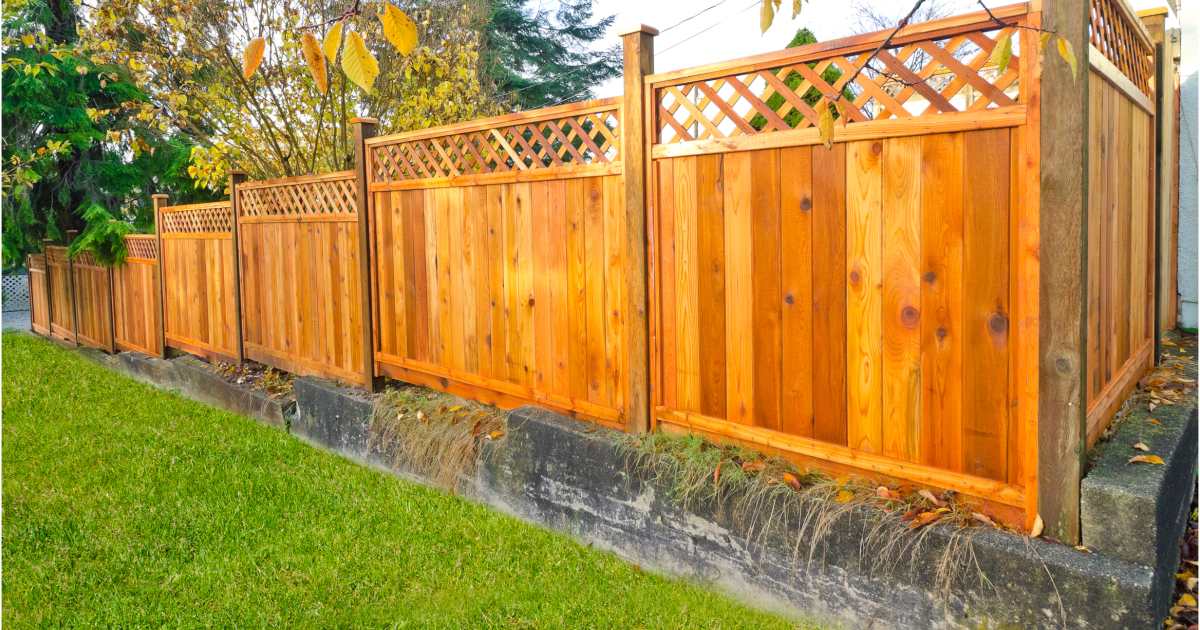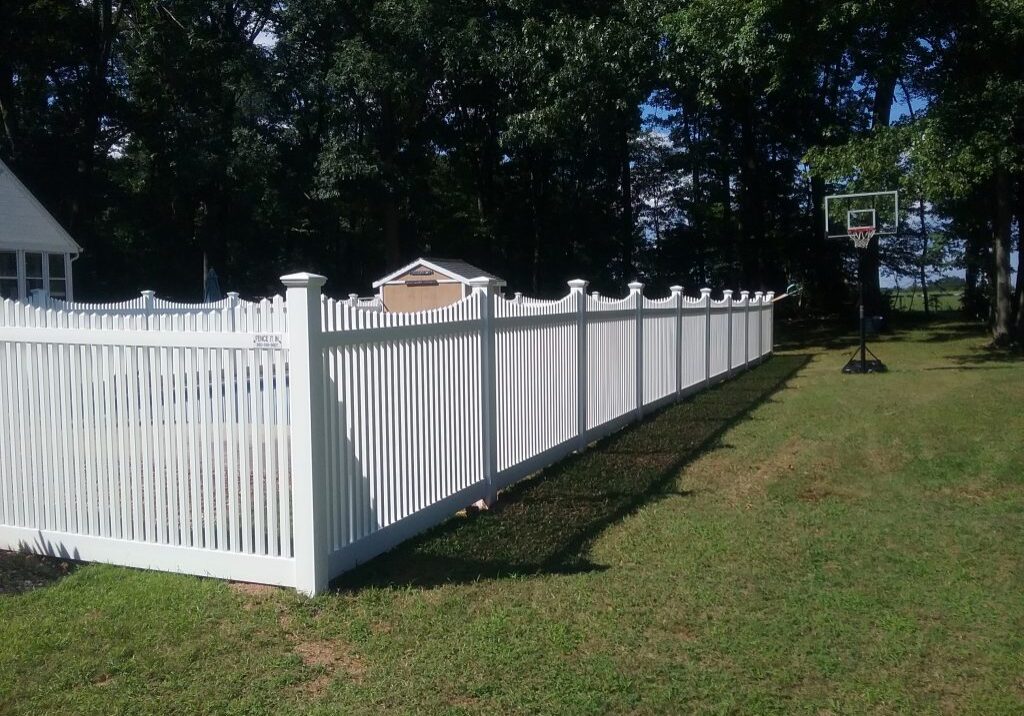All Categories
Featured
Your fencing is a financial investment that provides safety, visual, and personal privacy appeal. Each fencing type has distinct upkeep requires based on its product's resilience, direct exposure to the aspects, and various other aspects.
![]()
Climate Protection: Apply a top notch sealer or discolor every 2-- 3 years to shield the wood from moisture and UV rays. For extreme environments, annual reapplication may be essential. Cleaning: Make use of a garden hose pipe or a pressure washing machine on a reduced setup to remove dirt and mildew. Comply with up with a moderate cleaning agent for stubborn discolorations. Repair work: Inspect for loosened or rotting boards and change them quickly. Tighten up nails or screws to keep the framework stable. Bug Control: Usage termite-resistant timber or deal with the fence with parasite repellents to avoid problems. 2. Vinyl Fencings. Vinyl fencings are prominent for their longevity and minimal maintenance demands.
Cleansing: Wash the surface with a yard hose or a mixture of soap and water to eliminate dust and algae. For difficult spots, use a vinyl-specific cleaner or a soft-bristle brush. Inspections: On a regular basis inspect for cracks or bending, especially after solid winds or hefty impacts. Repair work: Replace any type of broken sections quickly. Plastic fencings often use modular elements, making fixings straightforward. 3. Chain-Link Fences. Chain-link fences are durable and cost-effective but need routine interest to protect against rust.
Rust Elimination: Utilize a wire brush to remove rust from exposed locations, after that apply a rust-inhibiting spray to shield the steel. Cleansing: Hose down the fencing frequently to get rid of dust. For grime, use soapy water and a stiff-bristle brush. Repairs: Tighten any kind of drooping areas or change damaged web links to keep safety and security. 4. Wrought Iron Fencings. Wrought iron fences provide sturdiness and elegance yet are vulnerable to rust otherwise effectively maintained.
![]()
Corrosion Prevention: Remove rust places with sandpaper and use a rust-resistant primer followed by exterior steel paint. Evaluate for corrosion at the very least twice a year. Cleaning: Clean down with a cloth and soapy water to maintain the finish. Avoid abrasive cleaners that can harm the surface area. Repainting: Repaint every couple of years to shield the steel from deterioration and maintain it looking fresh. 5. Light weight aluminum Fences. Light weight aluminum fencings are light-weight, resilient, and resistant to corrosion, needing less maintenance compared to functioned iron.
Cleansing: Tidy with soap and water to eliminate dirt and dirt. Wash extensively to stop residue. Evaluations: Look for loosened equipment or dents, especially after storms. Safeguard or replace parts as needed. Touch-Ups: Apply paint to damaged or damaged locations to stop damages to the safety finishing. 6. Compound Fences. Composite fences are made from a blend of wood and plastic, combining durability with minimal maintenance.
![]()
Cleaning: Utilize a hose or a soft brush with soap and water to clean up the surface area. Avoid making use of extreme chemicals. Assessments: Try to find warping, especially in extreme heat. Tighten or change any type of broken panels. Form Avoidance: While composite products withstand rot, keep the fencing dry and tidy to avoid mold and mildew buildup. 7. Bamboo Fences. Bamboo is an environment-friendly alternative yet calls for mindful maintenance to preserve its appearance and durability.
Sealing: Use a protective sealant or varnish every 2-- 3 years to defend against wetness and UV damages. Cleaning: Tidy with mild soap and a soft sponge or brush. Stay clear of high-pressure washing, which can harm bamboo fibers. Repair services: Change harmed areas or poles to preserve architectural stability and appearance. General Upkeep Tips for All Secure Fencing Kind. Routine Evaluations: Examine your fence at the very least once every season for damage, wear, or loose parts. Cutting Plants: Keep plants, vines, and bushes away from the fencing to prevent wetness damage and reduce parasite activity. Seasonal Changes: In areas with snow, prevent piling snow against your fence to prevent structural anxiety. In warm climates, examine for heat-related bending or fading. Verdict. Each fencing product has its unique upkeep requirements, but an aggressive technique to care can extend its lifespan and keep it looking its best. Wooden fencings need even more focus contrasted to vinyl or aluminum, yet each material advantages from routine cleansing, examinations, and timely repair services. By customizing your upkeep techniques to the sort of fence you possess, you'll guarantee that it remains to provide aesthetic, privacy, and safety and security appeal for many years to come.

- Wooden Fences. Wooden fencings are valued for their all-natural look yet require constant upkeep to avoid damage.
Climate Protection: Apply a top notch sealer or discolor every 2-- 3 years to shield the wood from moisture and UV rays. For extreme environments, annual reapplication may be essential. Cleaning: Make use of a garden hose pipe or a pressure washing machine on a reduced setup to remove dirt and mildew. Comply with up with a moderate cleaning agent for stubborn discolorations. Repair work: Inspect for loosened or rotting boards and change them quickly. Tighten up nails or screws to keep the framework stable. Bug Control: Usage termite-resistant timber or deal with the fence with parasite repellents to avoid problems. 2. Vinyl Fencings. Vinyl fencings are prominent for their longevity and minimal maintenance demands.
Cleansing: Wash the surface with a yard hose or a mixture of soap and water to eliminate dust and algae. For difficult spots, use a vinyl-specific cleaner or a soft-bristle brush. Inspections: On a regular basis inspect for cracks or bending, especially after solid winds or hefty impacts. Repair work: Replace any type of broken sections quickly. Plastic fencings often use modular elements, making fixings straightforward. 3. Chain-Link Fences. Chain-link fences are durable and cost-effective but need routine interest to protect against rust.
Rust Elimination: Utilize a wire brush to remove rust from exposed locations, after that apply a rust-inhibiting spray to shield the steel. Cleansing: Hose down the fencing frequently to get rid of dust. For grime, use soapy water and a stiff-bristle brush. Repairs: Tighten any kind of drooping areas or change damaged web links to keep safety and security. 4. Wrought Iron Fencings. Wrought iron fences provide sturdiness and elegance yet are vulnerable to rust otherwise effectively maintained.

Corrosion Prevention: Remove rust places with sandpaper and use a rust-resistant primer followed by exterior steel paint. Evaluate for corrosion at the very least twice a year. Cleaning: Clean down with a cloth and soapy water to maintain the finish. Avoid abrasive cleaners that can harm the surface area. Repainting: Repaint every couple of years to shield the steel from deterioration and maintain it looking fresh. 5. Light weight aluminum Fences. Light weight aluminum fencings are light-weight, resilient, and resistant to corrosion, needing less maintenance compared to functioned iron.
Cleansing: Tidy with soap and water to eliminate dirt and dirt. Wash extensively to stop residue. Evaluations: Look for loosened equipment or dents, especially after storms. Safeguard or replace parts as needed. Touch-Ups: Apply paint to damaged or damaged locations to stop damages to the safety finishing. 6. Compound Fences. Composite fences are made from a blend of wood and plastic, combining durability with minimal maintenance.

Cleaning: Utilize a hose or a soft brush with soap and water to clean up the surface area. Avoid making use of extreme chemicals. Assessments: Try to find warping, especially in extreme heat. Tighten or change any type of broken panels. Form Avoidance: While composite products withstand rot, keep the fencing dry and tidy to avoid mold and mildew buildup. 7. Bamboo Fences. Bamboo is an environment-friendly alternative yet calls for mindful maintenance to preserve its appearance and durability.
Sealing: Use a protective sealant or varnish every 2-- 3 years to defend against wetness and UV damages. Cleaning: Tidy with mild soap and a soft sponge or brush. Stay clear of high-pressure washing, which can harm bamboo fibers. Repair services: Change harmed areas or poles to preserve architectural stability and appearance. General Upkeep Tips for All Secure Fencing Kind. Routine Evaluations: Examine your fence at the very least once every season for damage, wear, or loose parts. Cutting Plants: Keep plants, vines, and bushes away from the fencing to prevent wetness damage and reduce parasite activity. Seasonal Changes: In areas with snow, prevent piling snow against your fence to prevent structural anxiety. In warm climates, examine for heat-related bending or fading. Verdict. Each fencing product has its unique upkeep requirements, but an aggressive technique to care can extend its lifespan and keep it looking its best. Wooden fencings need even more focus contrasted to vinyl or aluminum, yet each material advantages from routine cleansing, examinations, and timely repair services. By customizing your upkeep techniques to the sort of fence you possess, you'll guarantee that it remains to provide aesthetic, privacy, and safety and security appeal for many years to come.
Latest Posts
How Regular Vehicle Maintenance at Montclare Auto Repair Reduces Costs
Published Jun 01, 25
1 min read
Join WyHy Federal Credit Union – Top Benefits for Your Future
Published May 26, 25
1 min read
Uncover Montclare Auto Repair’s Leading Services and Why Drivers Trust Them
Published May 25, 25
1 min read
More
Latest Posts
How Regular Vehicle Maintenance at Montclare Auto Repair Reduces Costs
Published Jun 01, 25
1 min read
Join WyHy Federal Credit Union – Top Benefits for Your Future
Published May 26, 25
1 min read
Uncover Montclare Auto Repair’s Leading Services and Why Drivers Trust Them
Published May 25, 25
1 min read